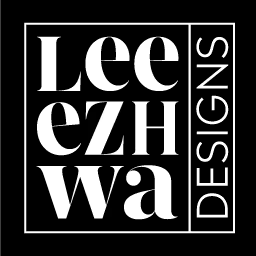Still asking for a logo? That’s like ordering a business card and calling it a brand.
Here’s the problem: most businesses think they need a logo when what they actually need is a system — a complete, coherent way to show up, sound like themselves, and be remembered across everything they do.
Because guess what? Your brand doesn’t live in a vacuum-sealed style guide. It lives in motion. In context. In every awkward footer, every LinkedIn post, every email signature your intern just designed in Word.
And without a system? You’re building a house with just the doorknob.
A logo is not a brand. And a brand isn’t a static design artifact, it’s a dynamic ecosystem.
Most companies start with a logo, sprinkle in some colors, and think they’re done.
What they miss is coherence. What holds it all together. The why behind the what.
Without a system, you get:
→ Marketing teams tweaking the logo to make it “pop”
→ Sales decks with fonts from 2007
→ Internal teams writing in totally different tones
→ Designers forced to invent rules that should’ve existed
Result? Brand erosion. Inconsistency. Confusion... inside and out.
Don’t ask for a deliverable. Ask for a system.
A brand system is more than a logo and a color palette. It’s the rules and relationships between every brand element: name, voice, typography, tone, motion, hierarchy, imagery, layout.
It tells your team how to express your brand, not just what it looks like in a vacuum.
It’s not decoration. It’s structure. And it’s the only way to scale consistency.
A logo might look good. A system makes you recognizable, flexible, and unforgettable.
What stats say about this:
- Lucidpress (2021): Consistent brand presentation across platforms increases revenue by up to 23%.
- McKinsey Design Index: Companies with mature design systems outperform peers by 2x in brand recognition and customer loyalty.
- Nielsen Norman Group: Users form an impression of your brand in 0.05 seconds — systems ensure that impression is consistent.
So no, this isn’t about aesthetics. It’s about business performance.
A Framework: The Brand System Iceberg™
Most clients only ask for the tip of the iceberg — the logo.
But what really makes a brand solid lies beneath the surface.
Here’s how I map it out:
⬆ Above the surface (visible)
- Logo
- Colors
- Typography
- Imagery
- Tagline
⬇ Below the surface (critical structure)
- Brand Strategy (Purpose, Positioning, Audience)
- Brand Voice & Messaging
- Design Principles
- Application Rules (UI, print, decks, motion, etc.)
- System Hierarchy (primary/secondary marks, layouts, templates)
You build only the top? That iceberg’s gonna tip.
Client: Healthcare SaaS Startup (Series B)
They came in with a logo. Just a logo.
Used randomly in slide decks. Slightly different blue on the site. No consistency in tone or message. Every designer they hired had to reinvent the wheel.
We ran a brand audit, then built a system from the ground up:
→ Defined hierarchy of marks and lockups
→ Built a flexible grid for UI and print
→ Established messaging pillars + tone guidelines
→ Created a modular deck system for sales and product
→ Designed templates they could actually use
Now? Everything they publish feels like them — even if it’s designed by five different people across three departments.
5 Actionable Takeaways
- Audit your brand outputs. Do your decks, site, docs, and emails all feel like the same company? If not, you’ve got a system gap.
- Build for real life. Your brand needs to work in PowerPoint, Figma, Webflow, Canva — not just on Behance.
- Codify voice and behavior. Tone, grammar, writing rules — these are brand assets, not afterthoughts.
- Design for growth. Systems aren’t rigid — they’re scalable. Plan for new channels, formats, and use cases.
- Teach the system. If your team doesn’t know how to use it, it’s not a system — it’s a decoration.
A logo won’t hold your brand together. A system will.
So stop asking for just a “visual identity.” Start demanding something that helps you grow, scale, and show up with confidence — anywhere.
Design is no longer just about what looks good. It’s about what holds.
If your brand keeps wobbling, it’s probably not the design’s fault.
It’s the lack of a system.
Let’s build something that actually scales with you.
👉 [Ready to trade your logo for a brand system? Let’s make it happen.]
Still Hungry?
Don’t stop here. If this post lit a spark, you’ll want to dive into more ideas cut from the same cloth, sharper thinking, bolder design, and zero fluff.
The Day I Fired My “Inner Impostor Boss”
How ADHD magnifies impostor syndrome and what it takes to shut it down.
From Corporate Costume to Thin Creative Skin
Why hiding behind conformity kills originality and how authenticity is your new armor.
Permission Slips for Reinvention - Why no one else is going to hand you one.
Stop waiting for diplomas, managers, or permission... write your own slip.


